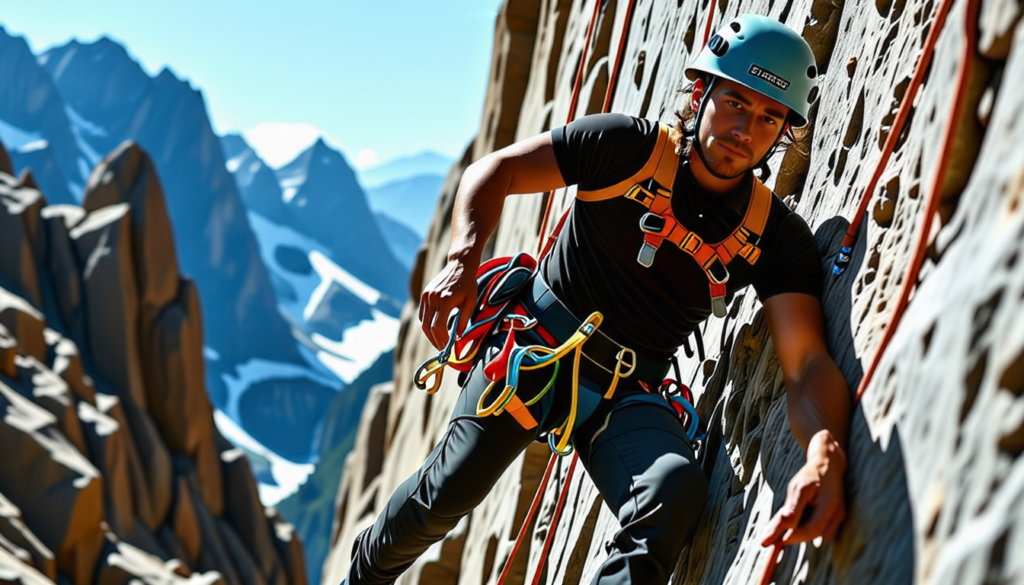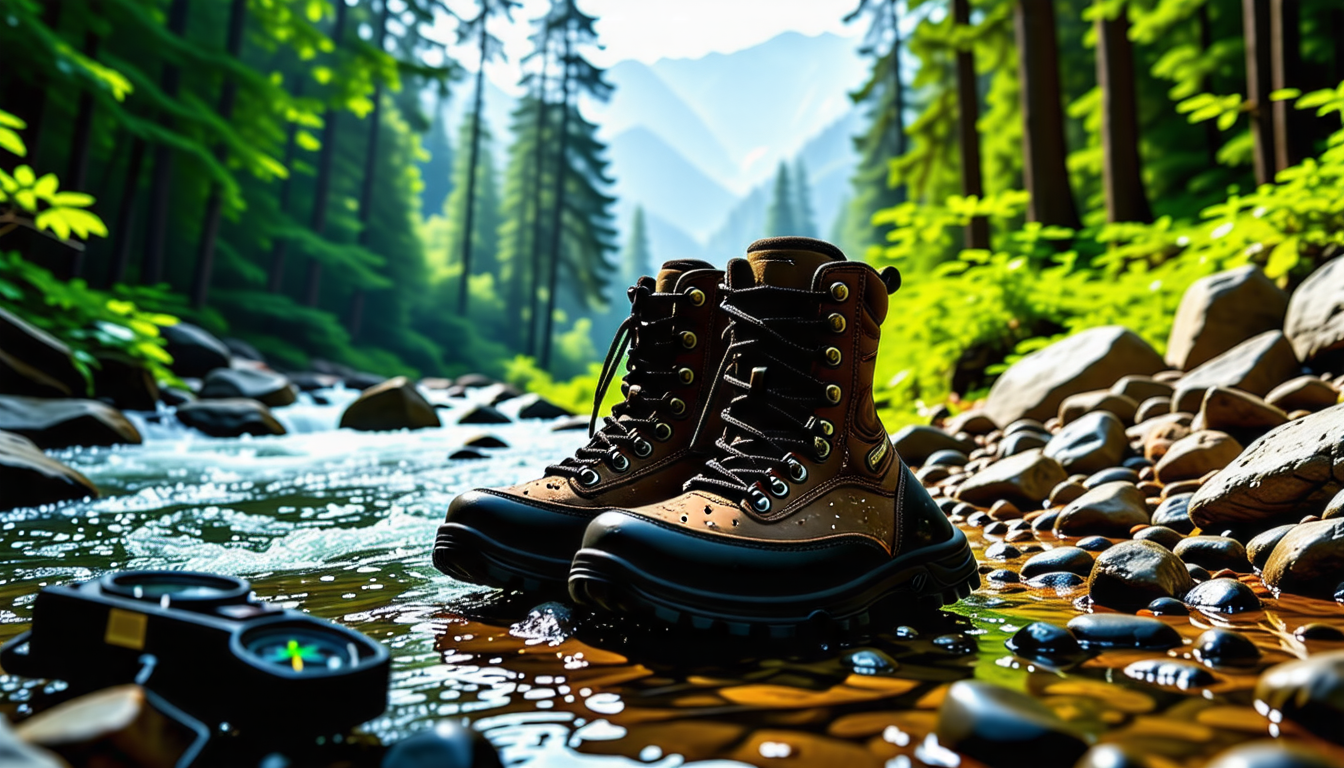|
IN BRIEF
|
For outdoor enthusiasts, the thrill of climbing often comes hand-in-hand with the responsibility of ensuring safety. A well-fitted climbing harness is not just an accessory—it’s a lifeline that can make the difference between a close call and a serious accident. As you navigate the vertical world, the risks can escalate quickly; thus, understanding the importance of a reliable harness is crucial. From the rigors of rock climbing to the challenges of glacier travel, harnesses play a vital role in injury prevention and provide climbers with the confidence to push their limits. With advancements in technology and design, today’s harnesses are engineered for optimal safety and comfort, making them indispensable tools for any climbing adventure.

The Importance of Climbing Harness Safety
Climbing is a thrilling pursuit that attracts adventurers across the globe. However, the exhilarating experience comes with inherent risks. Utilizing a climbing harness is not just advisable; it is essential for ensuring safety during challenging climbs. This section will explore why choosing the right harness and adhering to safety protocols can significantly mitigate risks in outdoor activities such as rock climbing and glacier travel.
Understanding the Functionality of Climbing Harnesses
A climbing harness serves several primary functions, all focused on protecting the climber. First and foremost, its primary role is to secure the individual to the rope, thereby preventing them from falling freely and reducing the potential for severe injuries. This functionality is crucial, especially for those who engage in rock climbing or snow and ice ascents.
Moreover, while many outdoor enthusiasts may know the basics of rock climbing safety, understanding the finer details of how climbing harnesses perform can greatly enhance their climbing experience. Many harnesses are designed with additional features, such as padded leg loops and adjustable straps. These ensure a comfortable fit, reducing the chances of injury while maneuvering through complex climbing scenarios. Some harnesses also come equipped with features that alleviate pressure on sensitive areas, such as foot straps that prevent tight leg straps from cutting off circulation.
Choosing the Right Climbing Harness
When it comes to selecting the perfect climbing harness, there are several factors to consider. Proper sizing and adjustment are vital to ensure that the harness fits securely while also allowing for a full range of motion. The process of putting on and adjusting a harness can sometimes be time-consuming; however, investing time in this crucial step is well worth it. A correctly fitted harness can make a significant difference in both comfort and safety while climbing.
Additionally, it is important to consider the type of climbing you will be doing. For example, the requirements may differ for indoor climbing versus outdoor climbing, and various activities may call for different harness types. Therefore, understanding the specific demands of your climbing environment will guide your decision-making process as you select a harness.
The Importance of Safety Features
The incorporation of safety features in climbing harness design has grown significantly, thanks in part to advancements in technology. Harnesses now often include indicators to show when they have taken a fall, elaborate padding to increase comfort during prolonged use, and gear loops for easy access to equipment.
Furthermore, additional gear such as a chest harness can provide increased support and stability, especially in situations where the climber might be hanging for extended periods. This can be particularly beneficial for routes that require more vertical maneuvers. Ensuring that you have a complete understanding of your harness and related safety features enables a climber to be prepared for any situation.
Regulations and Recommendations
Another consideration is adhering to climbing safety regulations and recommendations. Many sporting organizations advocate for specific standards when it comes to climbing gear. Ensuring that your harness complies with these guidelines guarantees that you are using equipment designed for your safety.
For beginners especially, resources such as rock climbing gear recommendations can provide invaluable insights into what to look for in a climbing harness. As outdoor enthusiasts become more knowledgeable about safety gear, they can make informed decisions that contribute to their climbing adventures.
Prevention Strategies for Outdoor Enthusiasts
In addition to utilizing a proper climbing harness, outdoor enthusiasts should be well-versed in various prevention strategies that enhance safety. These strategies frequently encompass areas such as communication, equipment checks, and knowledge of climbing techniques.
Communication among climbing partners is critical for safety. Establishing a clear set of signals or commands can ensure that everyone is on the same page, minimizing potential risks during climbs. Climbing is often viewed as a solitary sport, but having reliable partners can make a substantial difference in safety practices.
Routine Equipment Checks
Before embarking on a climb, conducting routine equipment checks is a recommended precaution. This includes inspecting the climbing harness for wear and tear, ensuring that buckles and straps function correctly, and verifying the integrity of the ropes and other gear. Knowing the condition of your equipment can be vital for minimizing risks.
It’s also beneficial to stay informed about how to adjust your harness correctly. A well-adjusted harness will feel secure but not overly tight; this balance is what keeps you safe during climbs. This preventive measure is often neglected but is integral to a successful climbing experience.
Understanding the Consequences of Improper Usage
Despite the thrill and joy that climbing can bring, neglecting safety measures can lead to serious repercussions. A harness that is improperly fitted or adjusted can lead to accidents, causing both physical injury and emotional distress. The importance of understanding how to properly use and maintain your harness cannot be overstated, as it plays a crucial role in your overall safety.
Moreover, many climbers underestimate the risks involved when using their gear in challenging environments. Whether on a rock face or glacier, climbers are often exposed to factors such as changing weather conditions and uneven surfaces. In these situations, the security provided by a wearing appropriate harness becomes even more apparent.
Continued Education and Training
Another aspect that cannot be overlooked is the importance of continuous education in climbing safety. Regularly attending workshops and safety courses can help climbers stay informed about the latest safety protocols and equipment technologies. Popular climbing forums frequently discuss the latest innovations in harness design and how to best utilize them, fostering a community that values safety.
For instance, forums like those found on 14ers can be excellent places to ask questions and receive advice from experienced climbers. Knowledge sharing within the climbing community reinforces the importance of safety and drives home the value of using a harness appropriately.
Utilizing Technology for Enhanced Safety
Modern technology has entered the realm of climbing gear, providing climbers with innovative tools to enhance safety. New advancements in harness technology include improved suspension systems and enhanced materials that offer more durability and comfort. Using equipment like the latest models of harnesses can significantly improve your protection during climbs.
Even smartphones can play a role in climbing safety. Many apps provide real-time weather updates, tracking capabilities, and GPS functions that can prove invaluable in an emergency. Staying informed about your climbing environment can make a significant difference in your level of safety.
Conclusion on the Safety Essentiality for Outdoor Enthusiasts
The significant takeaway from the discussion on climbing harness safety is that the responsibility lies with each climber to ensure their equipment is up to standard. By dedicating time to proper gear selection, education, and safety practices, outdoor enthusiasts can greatly enhance their climbing experiences, all while reducing the many risks that come with such exhilarating activities.
For those engaging in climbing, remember that safety should never be compromised. As you gear up for your next endeavor, let your harness be a firm and reassuring safety net, guiding you safely through the adventure ahead.

For outdoor enthusiasts, climbing harness safety is paramount to enjoying the thrill of scaling rock faces and tackling steep terrains. It is estimated that around 25% of climbing accidents result from equipment failure or improper use. Thus, selecting the right harness is not just a preference but a necessity.
When choosing a climbing harness, always prioritize comfort and fit. A well-fitted harness reduces the risk of chafing and discomfort, enabling climbers to concentrate on their ascent. Features such as adjustable leg loops and a padded waistbelt can significantly enhance overall experience and safety. Moreover, ensure that the harness has been tested and certified according to safety standards.
Furthermore, integrating a chest harness can be beneficial, particularly in situations like via ferrata, as it helps maintain an upright position during suspension. Statistics show that the likelihood of injury decreases dramatically when wearing a full-body harness, especially for beginners.
Lastly, regularly inspect your harness for wear and tear. This simple act can prevent catastrophic failures and ensure a safe climbing experience. The right equipment and attitude can transform a thrilling adventure into a safe one!

For outdoor enthusiasts, the significance of climbing harness safety cannot be overstated. A well-fitted harness not only secures you to the rope but also minimizes the risk of serious injuries during your climbs. Whether you are tackling rocky terrains or icy slopes, the right harness is essential for providing protection and stability. Innovations in climbing technology have led to design improvements, enhancing the performance and comfort of these safety gear pieces. Understanding the diverse types of harnesses available is crucial, as they cater to specific climbing styles and activities. Investing time in choosing the right harness is a small price to pay for the peace of mind that comes with knowing you are well-protected against falls.
FAQ
Why is a climbing harness essential for outdoor enthusiasts?
R: A climbing harness is crucial because it secures climbers to the rope, minimizing the risk of serious injury or death during falls. It acts as a vital safety device, offering peace of mind while exploring challenging terrains.
What features should I look for in a climbing harness?
R: When choosing a climbing harness, consider factors like comfort, adjustable leg loops, gear loops for equipment storage, and weight capacity. Additionally, ensure the harness is suited for your specific climbing activities, whether it’s rock climbing or ice climbing.
How does a climbing harness enhance my safety while climbing?
R: A climbing harness distributes the force of a fall across the body, reducing the risk of injury. It houses necessary attachments for a safety rope, which limits the distance of a fall, therefore minimizing the dangers involved in climbing.
Should I wear a chest harness in addition to a climbing harness?
R: Yes, wearing a chest harness alongside a climbing harness can enhance stability while climbing, especially on challenging routes. It helps keep you upright if you happen to fall or become suspended.
What maintenance should I perform on my climbing harness for safety?
R: Regularly inspect your climbing harness for any signs of wear, such as frayed straps or damaged buckles. Store it in a cool, dry place away from direct sunlight and avoid exposing it to chemical substances, ensuring it remains in optimal condition for safe climbing.


